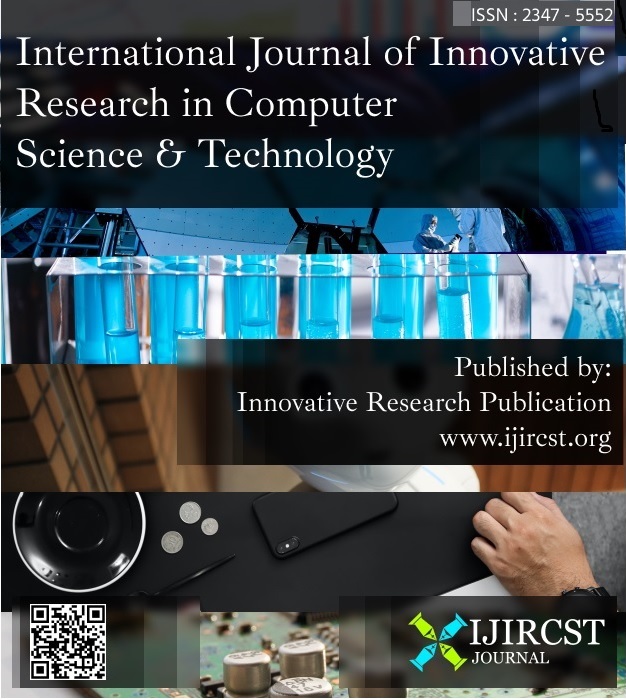An Overview on the Artificial Neural Network
Keywords:
Artificial Neural Network, Algorithm, Deep learning, MATLAB.Abstract
Deep learning is the cutting edge of artificial intelligence, which is already at the forefront (AI) (AI). Machine learning, on the other hand, is meant to teach computers how to interpret and learn from data. Deep learning enables a computer to continually educate itself to examine data, learn from it, and enhance its capabilities. This article gives a quick description of the Artificial Neural Network forecasting method (ANN) (ANN). It is used to boost the model's forecast accuracy while lowering the model's dependency on test data or current value. The fundamental developments in technology that have been applied in MATLAB are described, as well as distinct ANN discrete sets. The goal of the preparation is to keep the input equations' mean square errors to a minimal. The ANN model may be used to forecast yield boundaries, which assists in the best estimation of machining borders for the purpose of measuring improving streamlining machining boundaries.
Downloads
References
H. Xia, Z. Jia, X. Li, L. Ju, and E. H. M. Sha, “Trust prediction and trust-based source routing in mobile ad hoc networks,” Ad Hoc Networks, 2013, doi: 10.1016/j.adhoc.2012.02.009.
P. Gupta and N. Tyagi, “An approach towards big data - A review,” 2015, doi: 10.1109/CCAA.2015.7148356.
A. Abraham, “Big Data Approach towards Networking, Data Transfer, IOT and Security: A Review,” Journal of Web Development and Web Designing. 2019.
land use change by integrating ANN-CA model and landscape pattern indices,” Geomatics, Nat. Hazards Risk, 2016, doi: 10.1080/19475705.2014.1001797.
L. Bala and A. K. Vatsa, “Quality based Bottom-up Detection and Prevention Techniques for DDOS in MANET,” Int. J. Comput. Appl., 2012, doi: 10.5120/8726-2412.
N. Jain, Y. Awasthi, and R. K. Jain, “Ubiquitous sensor based intelligent system for net houses,” 2021, doi: 10.1109/ICCCIS51004.2021.9397080.
O. Erkaymaz, M. Özer, and N. Yumuşak, “Performance Analysis of A Feed-Forward Artifical Neural Network With Small-World Topology,” Procedia Technol., 2012, doi: 10.1016/j.protcy.2012.02.062.
E. Manglik, P. Sharma, P. Rawat, and N. Tyagi, “Ontology based context synonymy web searching,” 2013, doi: 10.1109/ICISCON.2013.6524185.
T. K. Sharma, “Enhanced butterfly optimization algorithm for reliability optimization problems,” J. Ambient Intell. Humaniz. Comput., 2021, doi: 10.1007/s12652-020-02481-2.
L. Cao, Y. Yue, Y. Cai, and Y. Zhang, “A Novel Coverage Optimization Strategy for Heterogeneous Wireless Sensor Networks Based on Connectivity and Reliability,” IEEE Access, 2021, doi: 10.1109/ACCESS.2021.3053594.
S. Rehman and M. Mohandes, “Artificial neural network estimation of global solar radiation using air temperature and relative humidity,” Energy Policy, 2008, doi: 10.1016/j.enpol.2007.09.033.
P. Singh and N. Tyagi, “Radial Basis Function For Handwritten Devanagari Numeral Recognition,” Int. J. Adv. Comput. Sci. Appl., 2011, doi: 10.14569/ijacsa.2011.020521.
K. A. Parekh, M. M. Goswami, and S. K. Mitra, “Handwritten Numeral Recognition Using Polar Histogram of Low-Level Stroke Features,” 2020, doi: 10.1007/978-981-32-9088-4_15.
J. Tilmanne, J. Urbain, M. V. Kothare, A. Vande Wouwer, and S. V. Kothare, “Algorithms for sleep wake identification using actigraphy: A comparative study and new results,” J. Sleep Res., 2009, doi: 10.1111/j.1365-2869.2008.00706.x.
U. Akdag, M. A. Komur, and A. F. Ozguc, “Estimation of heat transfer in oscillating annular flow using artifical neural networks,” Adv. Eng. Softw., 2009, doi: 10.1016/j.advengsoft.2009.01.010.
F. Cavallaro, “Electric load analysis using an artifical neural network,” Int. J. Energy Res., 2005, doi: 10.1002/er.1054.
M. Yay and E. D. Akinci, “Application of Ordinal Logistic Regression and Artifical Neural Networks in a Study of Student Satistaction,” Cypriot J. Educ. Sci., 2009.
R. Singh and N. Singhal, “An enhanced vehicle parking management using artificial intelligence,” 2018, doi: 10.1109/SYSMART.2018.8746986.
Y. Awasthi, A. Sharma, and R. Pandey, “Image Watermarking Using APDCBT in Selected Pixel Blocks,” 2020, doi: 10.1109/SMART46866.2019.9117522.
R. A. Kuçak, E. Özdemir, and S. Erol, “The segmentation of point clouds with K-Means and Ann (Artifical Neural Network),” 2017, doi: 10.5194/isprs archives-XLII-1-W1-595-2017.
S. Walczak and N. Cerpa, “Heuristic principles for the design of artificial neural networks,” Inf. Softw. Technol., 1999, doi: 10.1016/S0950-5849(98)00116- 5.
E. Pekel and S. S. Kara, “A Comprehensive Review for Artifical Neural Network Application to Public Transportation,” Sigma J. Eng. Nat. Sci., 2017.
